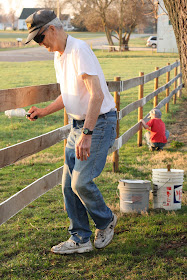A couple of years ago, I was lounging in the bathtub and I happened to read the ingredients list on the body wash bottle. Yikes! Why had I never read this before? What the heck is THAT ingredient? What do all these numbers mean? WHY am I soaking my body in these chemicals? It slowly occurred to me that since nicotine patches and birth control patches are applied to the skin and send their drugs directly to the blood stream, it must mean that anything I slather on my skin can penetrate and enter my bloodstream. Uggg. It made me sick to my stomach when I read the ingredient list on my children's body wash and lotion bottles. I could not believe I had been naively spreading chemicals all over their delicate skin. I was angry... not sure who I was more angry at... the companies for allowing this to happen or me for being so stupid and clueless. Mostly myself, I guess, for blindly trusting the advertising and not thinking twice about what I was doing. And I had to ask myself, "Why am I using these products? Simply because I always have? Do I really need to use body wash, perfume, etc.? What would happen if I didn't? Would I *gasp* smell like a human being instead of a flower/mountain stream/apple?" It all started to seem very silly to me. I suppose I should also mention here that I am not "girly" in any way, shape or form. Of course I like to look (and smell ) nice, but I am certainly not a "primper" (I don't do my nails, style my hair, etc.). My daily grooming routine takes 5 minutes, tops.
So I decided to purge my bathroom and closets of all those nasty chemicals. What a shock to add up all the personal care products I used every single day. Perhaps the chemicals in these products are not so bad in and of themselves, but when used daily and combined with any number of other products, well folks, we just don't know how it's going to effect us. I don't care if scientific testing says it's safe - there is no way they can test every product in conjunction with a myriad of other products. I choose to play it safe by avoiding questionable products, instead of following the modern thinking, which believes everything is innocent until proven guilty (and by then the damage is done -and you were an unwilling guinea pig). I once read that if you look at the ingredient list on a bottle and see something on there that you would not dare to eat, then you shouldn't be putting it on your body either. Now THAT got me thinking.
What the what? And I've been slathering this on my children for years?
But it's easier said than done. These days our bodies are assaulted by toxins and chemicals in millions of different ways - they are in our food, in the air we breath, in the clothes we wear, the detergents we use to clean out clothes, the textiles and furnishings in our homes, the cookware we use to prepare food, not to mention all the medications we consume and personal care products we use. Our bodies are working in overdrive to purge the toxins from our bodies, and they just can't keep up with the daily load. I've made it my goal to remove as many as these toxins as I can and have decided to not sweat what I cannot control. Small changes are better than no changes. Several books on my reading list have been helpful guides, but perhaps the most informative were "Never Be Sick Again" by Raymond Francis, M.Sc. and "Diet for a Poisoned Planet" by David Steinman. Warning: These books may cause you to panic as you discover just how toxic our world is. I'm not trying to scare you. Do not despair. It is not hopeless. Do not throw your hands up in defeat. Remember, God created us with the capability to heal. We just have to give our bodies a chance to do what they were designed to do. So lay off already and give your body a break!
In the next post, I'll share with you what I have been doing to lighten the toxic load on family's bodies and link some valuable resources...stay tuned.














